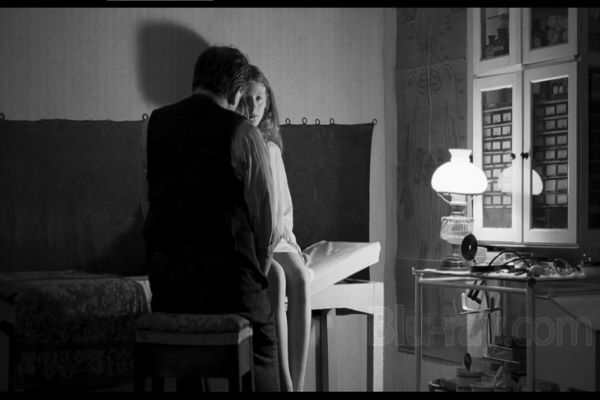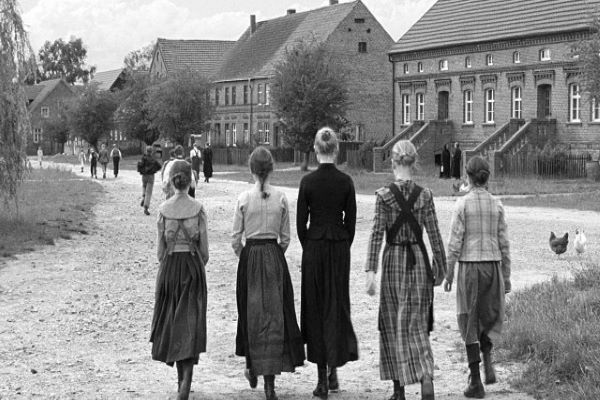Veteran auteur filmmaker Michael Haneke highlights the roots of evil in his dark and bleak drama film The White Ribbon. The roots of evil may not be limited to only one but multiple such as political, religious, and social. The forces of evil not only affect only one village, society, or country but can bring detrimental and paralytic effects anywhere in the world. The apparently simple and tranquil lives of the villagers in a fictitious Protestant Northern German village named Eichwald are shown in The White Ribbon. However, their simple lives in that tranquil village are much impacted by three residents who are a doctor, a baron, and a pastor. Strange and violent incidents start happening in the village without the culprits getting caught. The film features multiple children and all of them are not innocent. In The White Ribbon, Michael Haneke creates a deep sense of horror without showing atrocities on the screen.

The story of The White Ribbon is the recollection of past memories of an aged man who worked as a school teacher (Christian Friedel) from 1913 to 1917 in a fictitious Protestant northern German village named Eichwald. His voice-over is heard throughout the film narrating his past memories attached to that village and the villagers. The apparently simple lives of the villagers are much controlled, monitored, and impacted by three key inhabitants of the village – a doctor (Rainer Bock), a baron (Ulrich Tukur), and a pastor (Burghart Klaussner). The Baron holds the maximum land in the village and the villagers are mostly employed on his farm. When his son Sigi suddenly disappears, he lays off the teenage nanny Eva (Leonie Benesch), the school teacher’s love interest. The pastor follows and preaches strict Protestant guidelines and does not shy away from punishing his teenage son and daughter for any transgressions. When his son confesses to masturbating, he gets his hands tied to the bed while sleeping. He punishes his daughter Clara inside the class in front of her classmates. The doctor abuses his mistress, a local midwife, and sexually abuses his teenage daughter. The romantic relationship between the school teacher and Eva grows stronger and he visits her family during Christmas. Her father reluctantly approves their relationship and permits marriage only after a year.
Suddenly, strange and violent incidents start happening in Eichwald. The doctor and his horse fall down, get terribly injured, and the horse is killed, as somebody has strung a wire between two trees. While working there, a farmer’s wife is killed in an accident in the baron’s sawmill. Her son holds the baron responsible for this accident and damages his cabbages. Tormented by his wife’s untimely sad demise and his son’s activity, the farmer hangs himself. The baron’s son Sigi goes missing and is found later in the sawmill terribly beaten and his hands tied. A barn at the baron’s estate is set on fire. The baroness confesses to having an affair. The pastor’s daughter avenges her insult caused by her father in front of her schoolmates by brutally killing his pet bird in the shape of a cross with a scissor and placing it on his desk. The steward’s daughter sees the midwife’s handicapped son getting harmed in her violent dream. Later, the boy really goes missing and is rescued only after a thorough night search injured and nearly blinded. The steward’s sons thrash the baron’s son Sigi, push him into the water of a pond, and snatch his whistle. When the steward comes to know about this incident, he storms into his house and beats his sons.

The midwife claims that her son knows the culprit and cycles away to report the incident to the nearest police station. However, neither she nor her son is seen again. The doctor suddenly leaves Eichwald with his family. The school teacher presumes the pastor’s children as the perpetrators, which irks him so much that he threatens to report the school teacher to the authorities. World War I breaks out. The school teacher’s would-be father-in-law visits the village on a Sunday morning. The village remains calm and terrified. At the start of 1917, the school teacher is transferred from Eichwald. He leaves the village and never returns.
Veteran filmmaker Michael Haneke shows the roots of evil in The White Ribbon. Even though the story is set in the fictitious Protestant Northern German village of Eichwald, the evil forces are not limited to a particular society or country. These forces can significantly affect any country in the world. It impacts present as well as future generations and children are the worst victims. The impact and influence of the evil forces are so intense that they lose their ability to differentiate between good and bad, holy and evil. Evil influences jeopardize their lives. It is not a surprise that many Germans supported Adolf Hitler and his policies. There are unfortunate times when human beings forget humanity. Multiple generations are brainwashed. Bloodbaths and massacres of innocent civilians are executed in the name of political ideologies. The future of an entire country looks bleak and gloomy.

In The White Ribbon, Michael Haneke makes a horror film without horror images and digs deeper into the evil forces that make society blind. He shows that even children are not completely innocent. Even though he does not directly mention that the evils portrayed in the film lead to Fascism or Nazism or the rise of Adolf Hitler, the impact of these evil forces on children cannot be denied. In the film, Haneke does not show the culprits responsible for all those atrocities in Eichwald. He only points out the roots of the evils not only in Germany but all over the world. As a key art medium, films should raise questions, but not necessarily answer them. Haneke does exactly the same. He invites the viewers to connect the dots. Viewers don’t know the perpetrators of all the strange and violent incidents in the village. However, the viewers know that all is not well in Eichwald. The doctor, the pastor, and the baron have a strong negative impact on the lives of the villagers and their families. In this violent atmosphere, everybody attacks everybody.
The screenplay and dialogues of The White Ribbon are slow-paced, minimal, to the point, restrained, and largely stripped of violence on the screen. Even though the ghastly violent incidents are portrayed on the screen, the film is exceptionally calm and well-composed. So, the lead actors, Ulrich Tukur as the baron, Burghart Klaussner as the pastor, and Rainer Bock as the doctor, are mostly calm and composed throughout the film even though their actions portray misdeeds. Christian Friedel as the school teacher brings freshness to the screen and his romance with Eva (Leonie Benesch) is a treat to watch amidst all the violent incidents and negativities in the village. The most important characters in the film are played by the children. All of them are brilliant in the film. Their portrayal shows how a few powerful and influential people can ruin society and an entire ecosystem.
The White Ribbon marks the magnificent cinematography by Christian Berger. The entire film was shot in color and then the color was drained out to give it a black-and-white look. However, this black and white look is modern, and Christian Berger uses it to portray the film in recent times and not simply to give the film an old and vintage look. He magnificently captures especially the winter in Eichwald. The wintry landscapes are so carefully captured that each frame looks like a black-and-white painting. Apart from very few scenes such as during prayers or the harvest festival, music is largely stripped off the film. The White Ribbon won the coveted Palme d’Or award at the 2009 Cannes Film Festival. It won the Golden Globe award for Best Foreign Language Film at the 67th Golden Globe Awards. It was nominated for Best Cinematography (Christian Berger) and Best Foreign Language Film at the 82nd Academy Awards.
